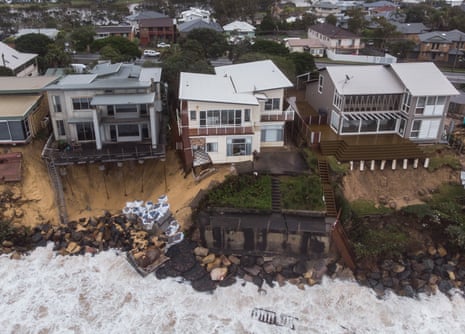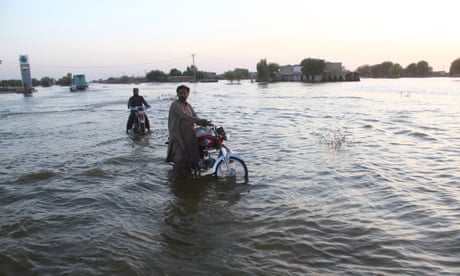Extract from The Guardian
The continent is now 1.47C hotter than it was in 1910 and sea levels around the coastline are rising at an accelerating rate.

Wed 23 Nov 2022 01.04 AEDT
Last modified on Wed 23 Nov 2022 01.06 AEDTExtreme weather events including torrential downpours, searing heat and dangerous bushfire conditions are all getting worse across Australia, with even more challenging events to come, according to the latest snapshot of the nation’s climate.The continent is now 1.47C hotter than it was in 1910 and sea levels around the coastline are rising at an accelerating rate, according to the 2022 State of the Climate report, a series released every second year.
Many of the changes are being driven by rising levels of greenhouse gases in the atmosphere caused mostly by the burning of fossil fuels.
The report, published by the Bureau of Meteorology and CSIRO, provides a snapshot of changes on land and ocean, including temperature, rainfall, storms and droughts.
The environment minister, Tanya Plibersek, said the report was “sobering reading” and the science minister, Ed Husic, said it “reinforces the urgent need for action on climate change”.
Research director of the Climate Science Centre at CSIRO, Jaci Brown, said: “There are no surprises here and the story hasn’t changed. It’s happening, it’s serious and we need to do something about it.”
The UN’s latest round of climate talks in Egypt ended last week with no meaningful progress to accelerate global action to cut emissions.
The Albanese government took to the summit an improved emissions target of 43% by 2030, based on 2005 levels, but independent analysis says the commitment is not in line with keeping global heating to 1.5C.
On Tuesday evening, the government announced it was adding $500m to the Clean Energy Finance Corporation to commercialise renewable energy, improve energy efficiency and develop other clean energy technologies.
The State of the Climate report shows day and night-time temperatures in Australia are rising, as is the number of extremely hot days in all months.
As an example, the report says there were 33 days in 2019 when the national average maximum temperature went above 39C. This was more days in one year than in all the previous 58 years.
The largest area of sea ice recorded by satellites around Antarctica was in September 2014, but since then there has been a “marked, abrupt and relatively persistent decrease” in sea-ice extent, which in early 2022 fell below 2m sq km for the first time since observations began.
The report says most of the current trends are set to get worse, with more heat, higher sea levels, longer droughts and more intense rainfall events.
There could be fewer cyclones, but a higher proportion of those that do form are likely to be larger and more damaging.
Husic said the report reinforced the urgent need for action.
“We are a government that listens to the science; that acts on the science,” he said.
On Tuesday, the BoM said the current La Niña climate system that has been contributing to flooding across the country’s south-east is likely to end in January or February.
A seperate system in the Indian Ocean that has also been pushing more rain across the south of the continent is likely to dissipate in the next two weeks.


No comments:
Post a Comment